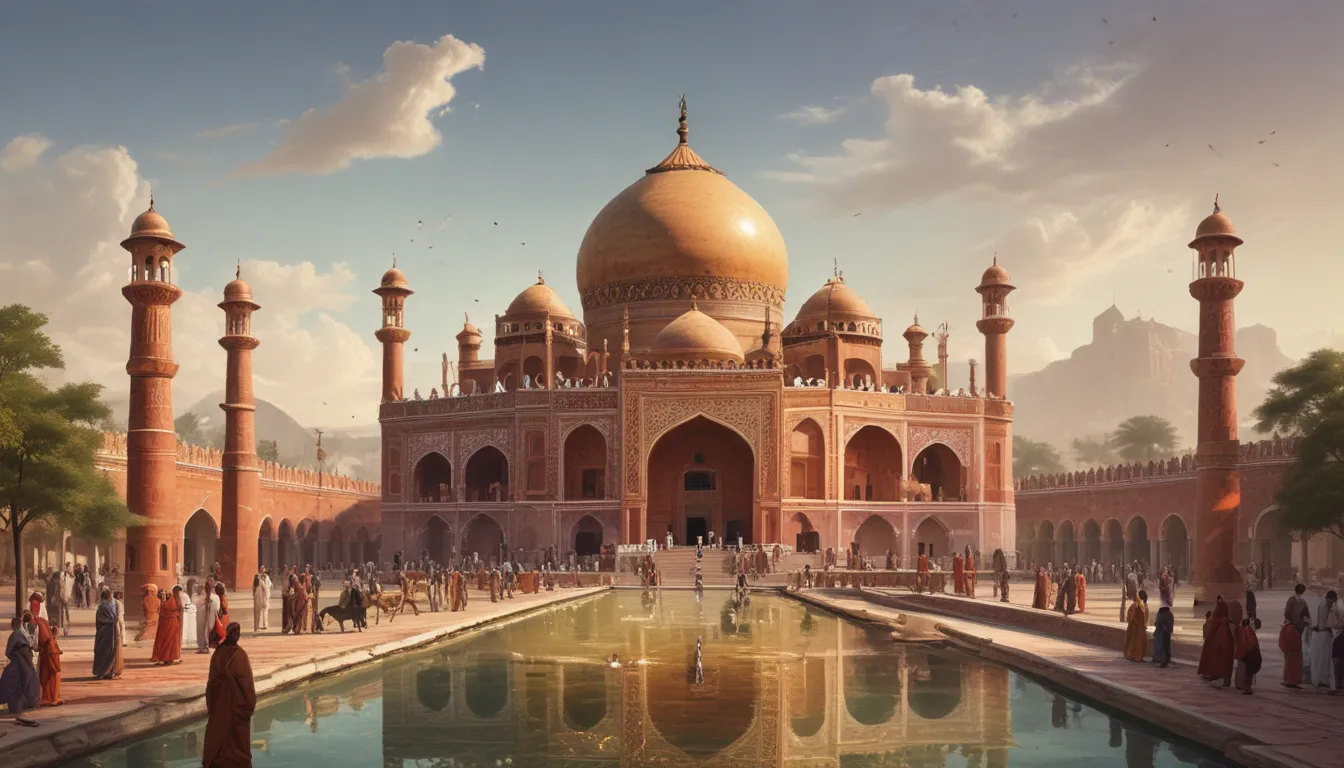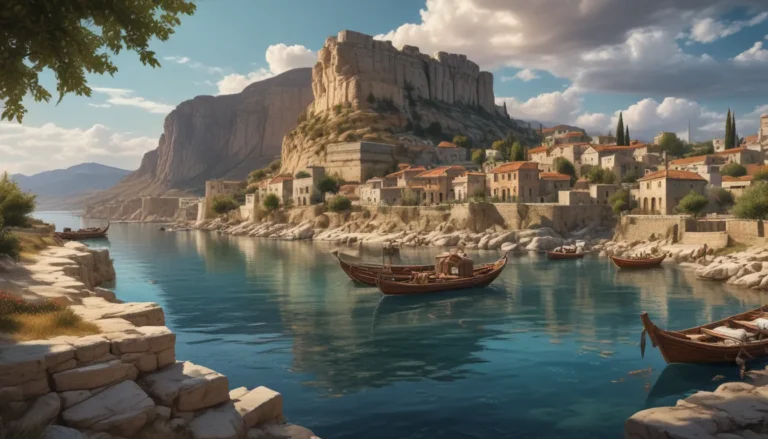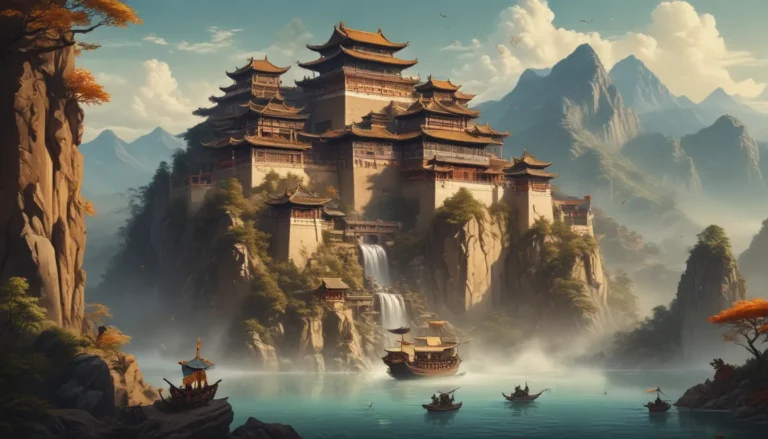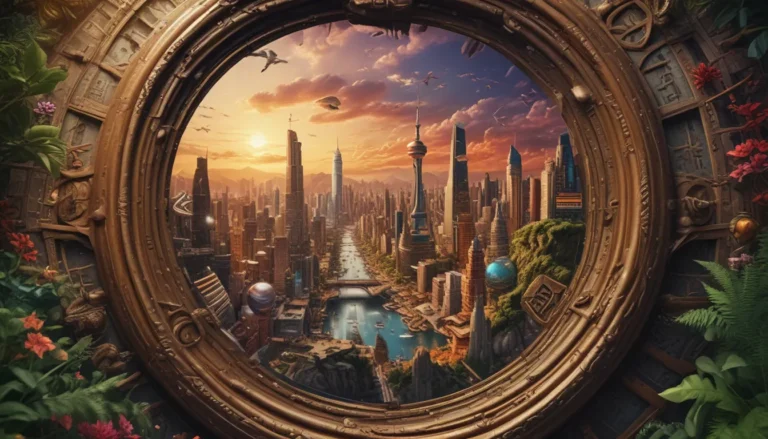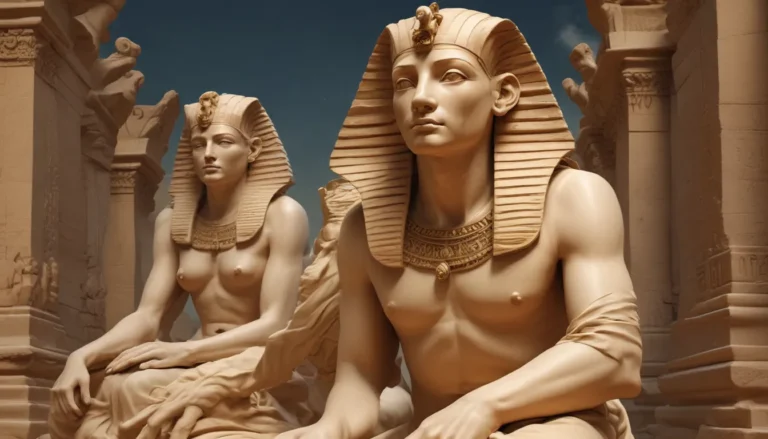The images in our articles may not match the content exactly. They are used to grab your attention, not to show the exact details in the text. The images complement the text but do not replace it.
Have you ever marveled at the grandeur of the Mughal Empire, a realm that once reigned over vast territories of the Indian subcontinent? Delving into the fascinating world of Mughal Empire facts offers a glimpse into a bygone era filled with intrigue, artistic wonders, and architectural marvels. From the iconic Taj Mahal to the innovative administrative practices introduced by Akbar the Great, the legacy of the Mughals continues to shape India’s cultural and historical landscape. Join us as we unravel the 18 most captivating facts about this empire that thrived from the 16th to the 19th century, and prepare to be amazed by tales of opulence, conquest, and innovation.
Exploring the Origins of the Mughal Empire
The Mughal Empire, renowned for its opulence and sophistication, traces its origins back to the early 16th century. In 1526, Babur, a descendant of Timur and Genghis Khan, founded the empire following his victory over Ibrahim Lodi at the historic Battle of Panipat. Beyond his prowess as a conqueror, Babur’s affinity for arts and literature set the tone for a dynasty that would place equal emphasis on culture and conquest.
Expanding Horizons: The Reign of Akbar the Great
Under the visionary leadership of Akbar the Great, the Mughal Empire flourished like never before, reaching its zenith in terms of both territorial expansion and cultural diversity. Akbar’s policy of religious tolerance and his patronage of the arts paved the way for a unique fusion of cultures that remains celebrated to this day.
- Akbar’s introduction of the Din-i Ilahi, a religion aimed at blending elements from various faiths, exemplified his commitment to harmony and unity.
- The architectural splendors of the Mughal Empire, from the enchanting Taj Mahal to the majestic Red Fort, seamlessly meld Persian, Indian, and Islamic influences, captivating visitors for generations.
Unveiling the Mughal Administrative System
One of the hallmarks of the Mughal Empire was its well-structured administrative system, which played a pivotal role in maintaining control over its vast territories. This system included the division of the empire into provinces known as Subahs, each governed by a Subahdar.
- The adoption of Persian as the administrative language fostered a sense of cultural unity across the empire.
- The Zabt system of land revenue collection, a key feature of Mughal administration, ensured efficient and equitable tax collection methods.
The Twilight of an Empire: Decline of the Mughal Dynasty
Despite its grandeur, the Mughal Empire began to wane in the 18th century, grappling with internal conflicts and external invasions that sapped its resources. Nadir Shah’s invasion in 1739 and subsequent clashes with the Marathas further weakened the empire’s foundations.
- The pivotal Battle of Plassey in 1757 marked a turning point, paving the way for British dominance in India.
- By the mid-19th century, the reign of the last Mughal emperor, Bahadur Shah Zafar, came to an end, symbolizing the empire’s decline.
Legacy of the Mughal Empire: Enduring Influence on India
The Mughal Empire’s legacy endures in modern-day India, leaving an indelible mark on various aspects of culture and society.
- Mughlai cuisine, characterized by its rich flavors and aromatic spices, reflects the culinary traditions of the Mughal era.
- The literary world flourished under Mughal patronage, with the use of Urdu and Persian enriching the region’s poetic heritage.
- The concept of Mughal gardens, with their emphasis on symmetry and water features, underscores a deep appreciation for nature and beauty.
Cultural Renaissance: Mughal Contributions to Art and Culture
The Mughals emerged as prominent patrons of the arts, commissioning works that blended diverse traditions to create a distinctive Mughal aesthetic.
- Miniature paintings, renowned for their intricate details and vibrant hues, flourished during the Mughal era, capturing scenes from court life and mythology.
- Iconic structures like the Taj Mahal stand as testaments to Mughal architectural prowess, symbolizing themes of love and loss.
- Advancements in music, including the introduction of new instruments and ragas, enriched the musical landscape under Mughal patronage.
Echoes of the Past: Mughal Influence on Contemporary India
The influence of the Mughal Empire resonates through modern-day India, shaping its cultural tapestry and architectural heritage in profound ways.
- Cities like Delhi and Agra still bear the architectural imprints of their Mughal past, drawing millions of visitors annually.
- The values of secularism and religious tolerance, championed by Akbar, continue to define India’s cultural ethos.
- Festivals and customs introduced or popularized during the Mughal era, such as Diwali celebrations at the Red Fort, remain vibrant traditions.
- The meticulous record-keeping practices of the Mughals offer valuable insights into the social, economic, and cultural dynamics of their era.
- The enduring popularity of Mughal-inspired fashion and jewelry designs underscores the lasting impact of Mughal aesthetics on contemporary style.
Delving Deeper: A Glimpse into Mughal Magnificence
Exploring the depths of the Mughal Empire unveils a rich tapestry of history, culture, and architectural wonders that continue to captivate and inspire. From the ethereal beauty of the Taj Mahal to Akbar’s innovative policies promoting religious harmony, these facts only scratch the surface of Mughal splendor. Their contributions to art, governance, and society have left an indelible imprint on the narrative of South Asian history, inviting us to delve further into our shared past.
Frequently Asked Questions
Unraveling the enigma of the Mughal Empire raises intriguing questions about its legacy and impact on history. Here are answers to some common inquiries:
- Q: What sparked the beginning of the Mughal Empire?
-
A: Babur, a descendant of Genghis Khan and Timur, founded the Mughal Empire in 1526 following his victory over Ibrahim Lodi at the Battle of Panipat, setting the stage for a dynastic rule that endured for centuries.
-
Q: Who were some key rulers of the Mughal Empire?
-
A: Notable rulers following Babur included Humayun, Akbar the Great, Jahangir, Shah Jahan, and Aurangzeb, each contributing unique facets to the empire’s legacy.
-
Q: How did the Mughal Empire influence art and architecture?
-
A: Mughal rulers were renowned patrons of the arts, blending diverse artistic traditions to create a distinctive Mughal aesthetic evident in iconic structures like the Taj Mahal.
-
Q: What led to the decline of the Mughal Empire?
-
A: Various factors, including leadership challenges, military defeats, and the emergence of European colonial powers, contributed to the empire’s gradual decline.
-
Q: How did the Mughal Empire impact modern India?
-
A: The Mughal Empire’s enduring influence is visible in India’s cuisine, language, architecture, and societal values, shaping the country’s cultural fabric to this day.
-
Q: Can you visit Mughal architectural sites today?
-
A: Absolutely! Many of the empire’s architectural marvels are open to visitors, offering a firsthand glimpse into the magnificence of Mughal craftsmanship and design.
-
Q: What was the economic foundation of the Mughal Empire?
-
A: Agriculture served as the economic backbone of the empire, supported by efficient tax systems, trade networks, and thriving crafts industries.
-
Q: How did the Mughal Empire contribute to global history?
- A: The Mughal Empire played a pivotal role in shaping global history through its artistic, cultural, and intellectual contributions, fostering exchanges that transcended regional boundaries.
Embracing Authenticity and Expertise
At Memorients.com, our dedication to delivering reliable and engaging content is at the core of our mission. Each fact featured on our site is contributed by real users like you, offering a diverse tapestry of insights and information. Our team of diligent editors rigorously reviews every submission to ensure the highest standards of accuracy and authenticity. You can trust in our commitment to quality as you embark on a journey of exploration and discovery with us.
By immersing ourselves in the enchanting world of the Mughal Empire, we uncover a realm of splendor, sophistication, and cultural fusion that continues to resonate through the corridors of history. The legacy of the Mughals serves as a testament to the enduring impact of diverse traditions and visionary leadership on shaping the narrative of a nation. As we navigate through the corridors of time, let us celebrate the legacy of the Mughal Empire and its profound contributions to the rich tapestry of Indian heritage and culture.
